India-Kuwait Investment Conference 2.0, April 23, 2024
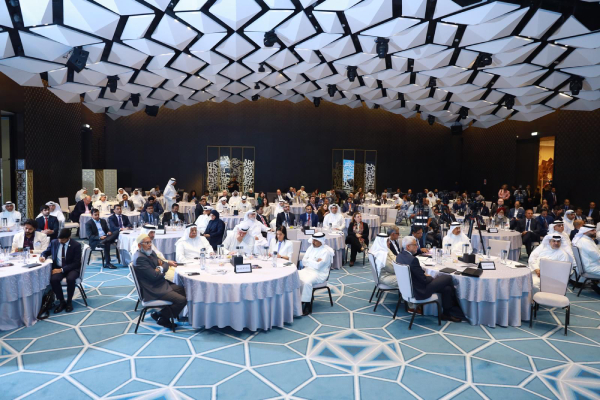
Remarks of Ambassador of India
H.E Mr. Ghanem Al Ghenaiman, Managing Director, Kuwait Investment Authority (KIA),
Mr. Saleh Al-Selmi, Chairman, Union of Investment Companies (UIC),
Mr. Rabah A. Al-Rabah, Director General, KCCI,
Mr K Rajaraman, Chairperson of International Financial Services Centres Authority - Gift City
Mr Sanjiv Aggarwal, MD & CEO of National Investment and Infrastructure Fund of India
Delegates from Invest India,
Delegates from Confederation of Indian Industry,
Mr. Gurvinder Singh Lamba, Chairman, IBPC and co-partner for this event,
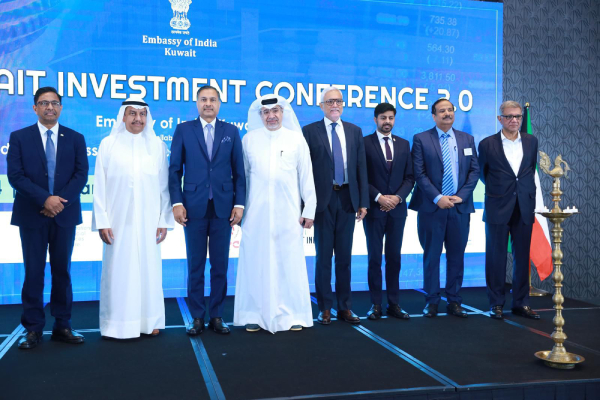
Friends from media,
Ladies and Gentlemen.
Good morning,
I welcome you all to the second edition of the India-Kuwait Investment Conference. The positive vibes created by last year’s Investment Conference encouraged us to organize the event this year as well. And we hope to institutionalize this annual event for the next few years in the calendar of events in Kuwait. Allow me to thank all stake-holders for their presence here, particularly Managing Director of KIA, Chairman UIC, DG, KCCI and all distinguished delegates from India, who have flown in especially for this Conference despite current geopolitical uncertainties and climatic vagaries in the region. I also take the opportunity to thank all potential end-users of this Conference for their presence here. Most importantly, this event would not have been possible without the support and assistance of the Executive Committee members of the Indian Business and Professional Council (IBPC).
Friends
2. The basic historical edifice of India-Kuwait relations has been trade and commerce. And this remains pertinent even in contemporary times when both our countries are at the cusp of transformation - India, the world’s 5th largest economy and with a goal to become ‘Viksit Bharat’ i.e a developed country by 2047 and Kuwait with its ambitious Vision 2035. And the challenge for us is, how do we translate this into an opportunity, how do we actually find the connects, the viability and the business case, to make the best of it.
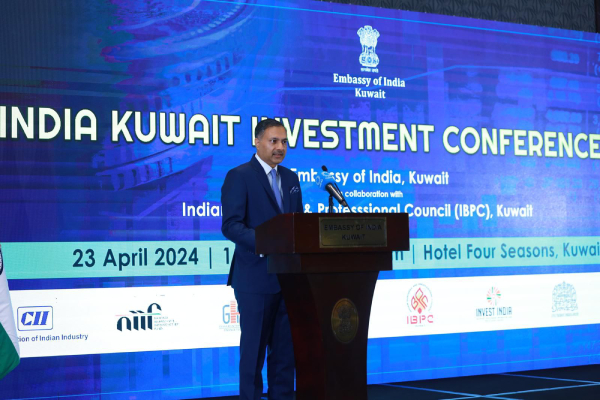
3. Last year also, I had posed the same question. Why India? Why does an investor need to look at India at the expense of some other investment destination? Is India offering something of greater value? I would again say the answer lies in the following facts and statistics and not any subjective philosophy:
(I) Economic Resilience and Growth: India is the fastest growing major economy in the world, 5th largest economy with GDP of USD 3.5 trillion, poised to become world’s third largest economy by 2027-28, has the world’s largest working population of 522 mln and the only major economy to keep growing above 6% per annum in the last decade. The GDP growth last year was 7.2%.
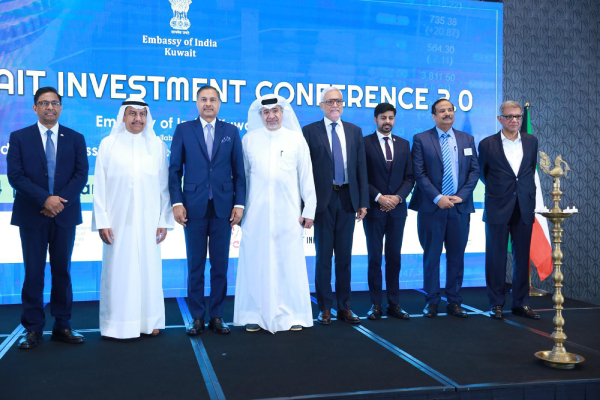
(ii) Foreign Direct Investment (FDI) Inflows. India has consistently attracted foreign direct investment, reflecting investor confidence in the country's economic fundamentals and growth prospects. A National Single Window Clearance system has been put in place at both Central and State Government levels. The FDI inflow during last 10 years was USD 596 billion and annual FDI doubled in a span of 8 years from USD 35 bn to USD 84 bn last year.
(iii) Diverse Investment Opportunities: India offers a diverse range of investment opportunities across various sectors, including but not limited to manufacturing, infrastructure, renewable energy, technology, healthcare, and agriculture. Initiatives such as Make in India and Digital India further enhances the attractiveness of investing in India. The Productivity linked Investment scheme with financial incentives worth USD 44 bn to promote domestic production in 14 priority sectors is a major step in this regard. To give an example, Apple’s ‘Made in India’ Iphone exports under PLI doubled from USD 5 bn to USD 10 bn this year.

(iv) Strategic Location and Market Access: Not only does India provide a market-size of over 1.4 bn people, it serves as a strategic gateway to the vast markets of South Asia, South-east Asia, and the Middle East. The Indian exports totaled USD 770 bn last year.
(v) Massive infrastructure development: Massive infrastructure drive is underway, including 100 critical transport infrastructure projects worth USD 9 bn that opens up possibilities for investments in various infrastructure sectors of India. For e.g the number of airports have doubled from 74 to 149 in last 10 years. Similarly, India has the largest rail network in Asia and 2nd largest road network globally with port-handling capcity expected to increase 4 times by 2047.
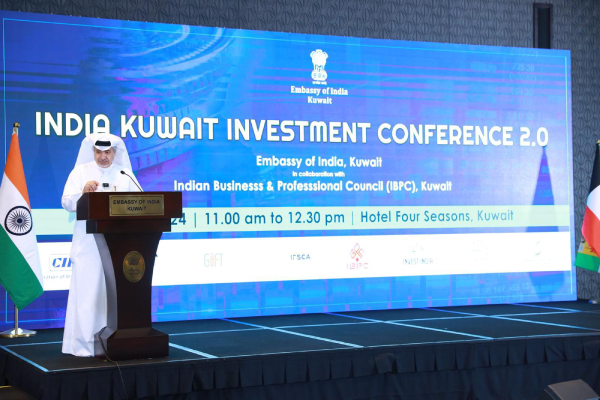
(vi) Technology and Innovation Hub: India has emerged as a global hub for innovation and technology, with a thriving start-up ecosystem and a skilled workforce. It will become a USD 1 trillion digital economy by 2026. India has the 3rd largest Start-up Ecosystem globally with 80 new Start-ups registering everyday. contributes 1 out of 10 unicorns globally and has the highest number of Start-ups recognized per day globally. Over 30,000 patents were granted in 2022, that shows its innovation strength.
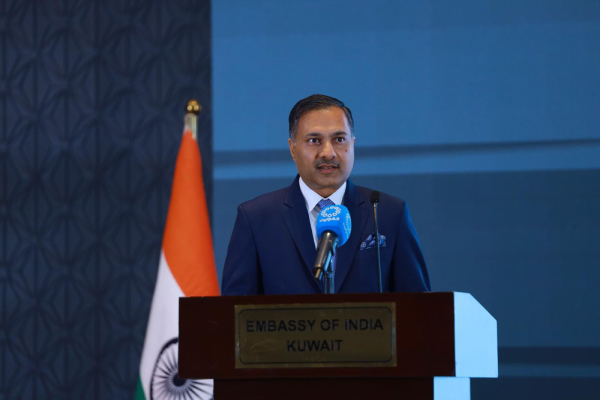
And all this has only been made possible with pro-business reforms by the Indian government. India has achieved 79 positions jump in World Bank’s Ease of Doing Business over the last 5 years. Initiatives such as the Goods and Services Tax (GST), Insolvency and Bankruptcy Code (IBC), etc. have streamlined processes and created a more favorable investment environment.
And how does India @100 I.e in 2047 look like:
- 2nd largest economy in the world of estimated USD 32 trillion
- FDI to grow 12 times to USD 1 trillion
- Exports to grow 12 times to USD 8 trillion
- Largest and youngest working population with a median age of 29
Ladies and Gentlemen,
Our bilateral trade of about 14 billion USD today is primarily based on oil and food-sector trade. While Kuwait is crucial for our energy requirements, India is critical for Kuwait’s food-security. And we have seen this during the challenging times of Covid-19 pandemic. At the same time, there is a huge scope for diversification into sectors such as infrastructure, manufacturing, renewable energy, technology, healthcare, tourism, agriculture etc. We are seeing encouraging signs of diversification in our export basket to Kuwait. I strongly believe trade and investment goes hand in hand. To transform growing trade relations between Kuwait and India into a robust investment partnership requires a strategic approach and concerted efforts from both sides. We must explore collaboration between public and private sectors to catalyze investment in critical infrastructure projects. Similarly, we are seeing an increasing role of Indian companies in delivering high-quality infrastructure projects in Kuwait. And the presence of distinguished representatives from CII speaks of the growing interest of Indian businesses in Kuwait.
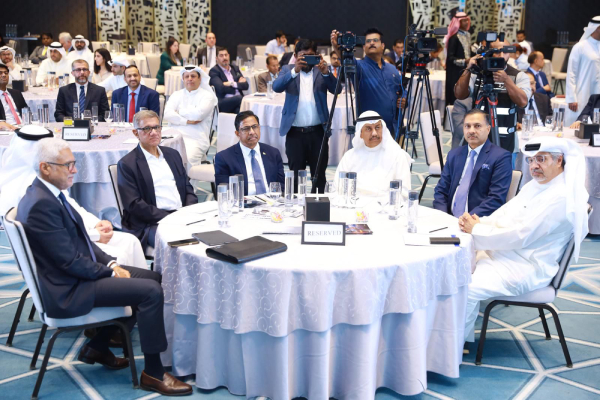
I am sure today’s deliberations and presentations at the Conference will give a detailed eye-view of the investment landscape in India, particularly opportunities in diverse sectors. And there would be many in the audience that may like to take advantage of the opportunities in “Incredible India’ – a global hot-spot for investments and ‘Make in India’.
I thank all our partners for making this event possible today. And last but not the least, my Embassy team for their hard work in putting all this together.





